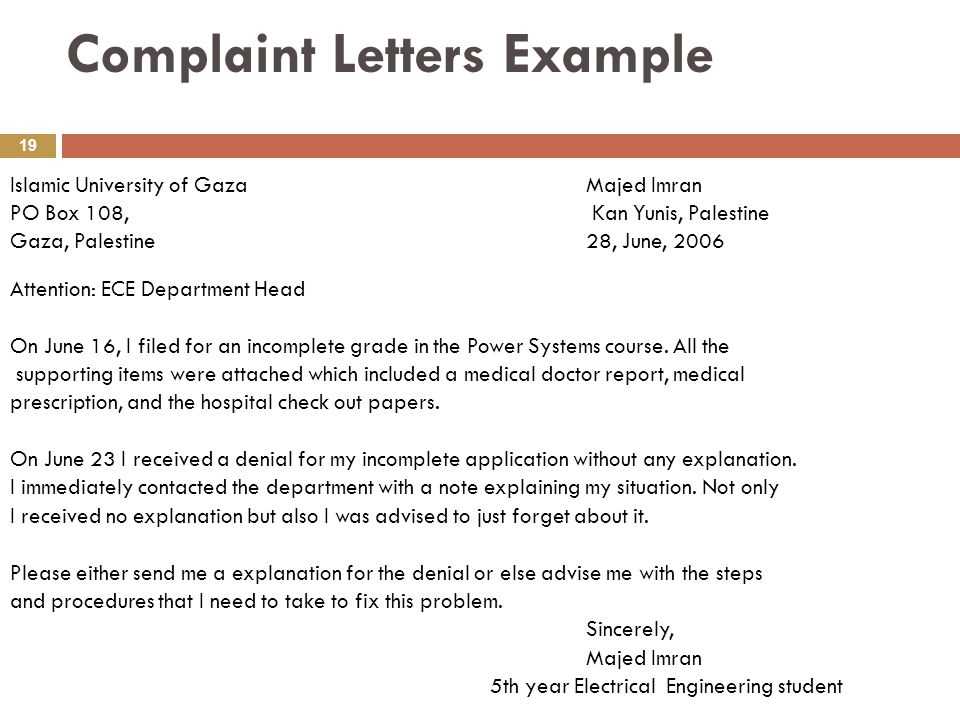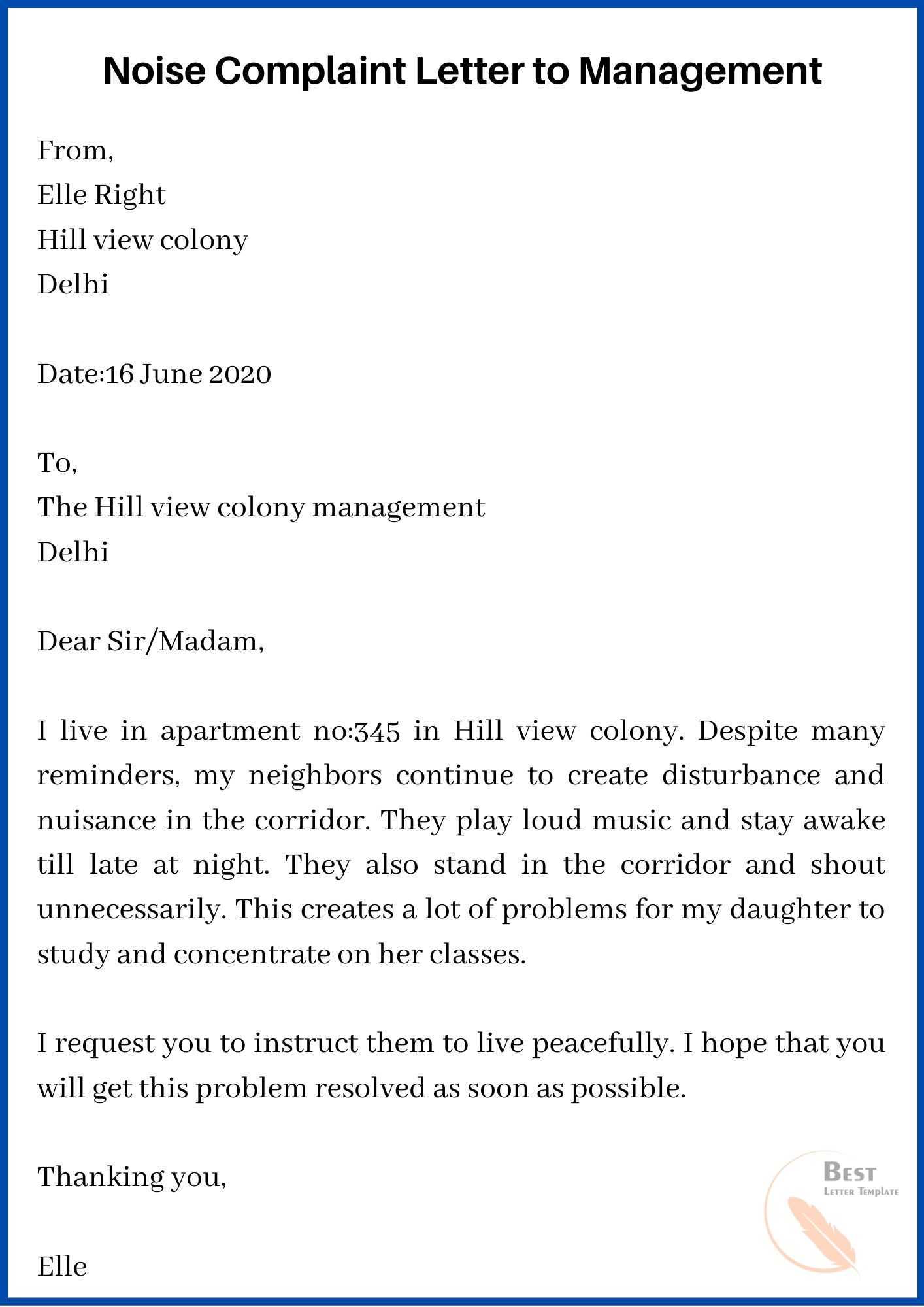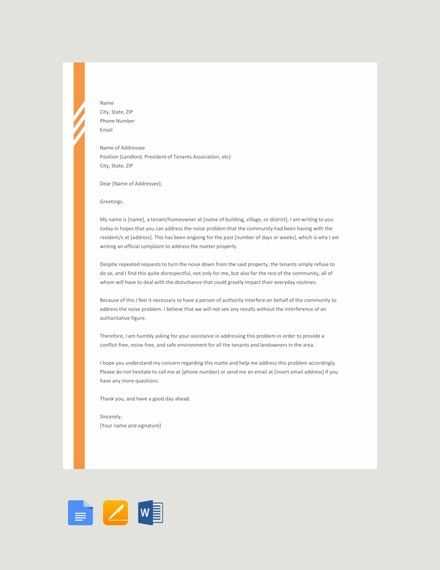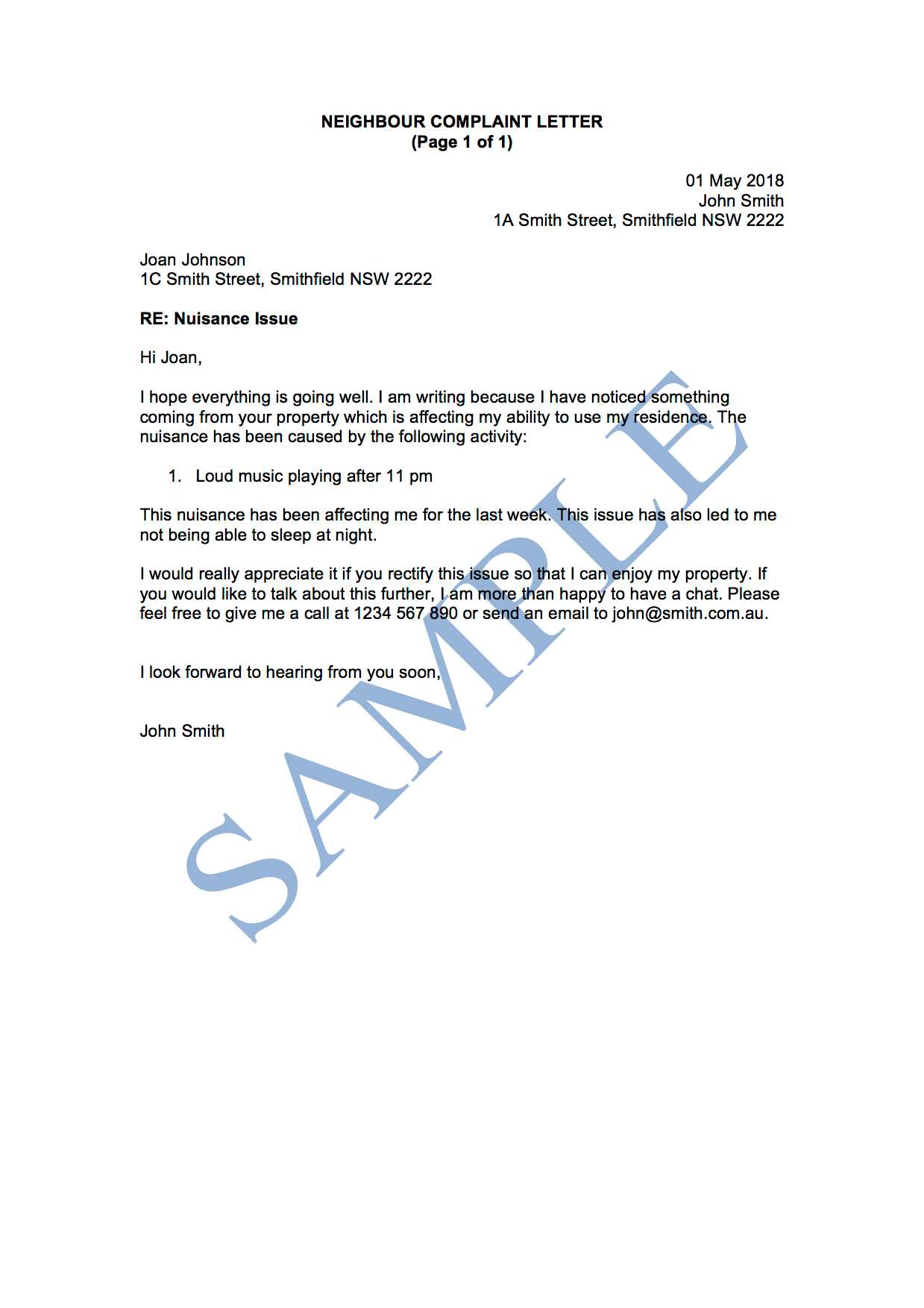Noise Complaint Letter Template for Council

When faced with disturbances from nearby properties, it is crucial to address the issue in a professional and structured manner. Many individuals find themselves unsure about how to express their concerns while ensuring their message is taken seriously. Crafting a formal request that clearly outlines the problem can help bring attention to the situation and encourage appropriate action.
Understanding the importance of presenting a well-structured document is key in resolving the issue smoothly. In this guide, we provide a simple framework for articulating your concerns in a manner that is respectful and impactful. Whether the disturbance involves excessive sounds, unusual disruptions, or any form of interference, it’s essential to communicate the matter effectively to the relevant authorities.
Following the right approach increases the chances of a timely resolution. In the following sections, we will explore the key components of a well-written request and how to avoid common pitfalls that might undermine your effort. A clear, concise, and polite message can significantly improve the likelihood of a positive outcome.
How to Write a Noise Complaint Letter
When facing disturbances that affect your peace and well-being, it’s important to communicate the issue clearly and formally to the appropriate authorities. A well-structured request helps ensure your concerns are taken seriously and acted upon in a timely manner. This section will guide you through the essential steps for drafting a professional and effective message.
Structuring Your Request
Begin by clearly stating the problem at hand. Include relevant details such as the date, time, and nature of the disturbance. Make sure to provide a brief description of the issue without being overly emotional. It’s crucial to maintain a neutral and factual tone throughout the document. Mention how the issue has impacted your daily life and why it is important to address it. Your goal is to provide enough information for the authorities to understand the situation and take appropriate action.
Details to Include
In your communication, it’s important to include all necessary information to support your case. Mention any prior attempts to resolve the matter informally, and if possible, include any evidence such as recordings, photos, or witness statements. Clearly express the desired outcome, whether it’s an investigation or a request for specific action. The more precise and organized your request is, the more likely it is to receive prompt attention.
Understanding Your Rights in Noise Disputes
When facing disturbances that impact your quality of life, it’s essential to know your legal and social rights. Understanding the framework in which you can address these issues allows you to take informed and effective action. Whether the disturbance comes from a neighbor or nearby business, recognizing your rights can empower you to seek a resolution.
Local laws often provide a range of protections to address unwanted disruptions. These regulations can vary depending on your location, but there are common principles that typically apply in most regions. Below are some key aspects to consider:
- Right to Peaceful Enjoyment: You have the right to enjoy your property without undue interference, which includes protection from excessive disturbances.
- Local Ordinances: Many municipalities have specific regulations regarding acceptable levels of sound or disturbances, particularly during certain hours.
- Actions Against Persistent Issues: If disturbances continue despite informal resolution attempts, you may have legal recourse to address the situation more formally.
To ensure your rights are upheld, it is important to understand how the relevant laws apply to your specific situation. Consulting local regulations and seeking legal advice, if necessary, will provide you with a clearer path forward.
Remember that taking a calm and measured approach, supported by knowledge of your rights, increases the chances of a favorable outcome. Make sure to keep track of any disruptions and document them carefully for future reference.
Key Information to Include in Your Letter
When drafting a formal request regarding disturbances, providing clear and relevant details is crucial for ensuring your issue is understood and addressed promptly. Including the right information helps authorities take quick and effective action. In this section, we will cover the essential points to include in your message to ensure it is both comprehensive and impactful.
Essential Details to Mention

Your message should contain key details that will help authorities investigate the issue efficiently. Here are the main points to cover:
| Detail | Explanation |
|---|---|
| Date and Time | Be specific about when the disturbances occurred to give a clear picture of the situation. |
| Description of the Issue | Provide a concise explanation of the disruption, highlighting its nature and frequency. |
| Impact on Your Life | Explain how the disturbances have affected your daily routine, health, or well-being. |
| Previous Actions Taken | Detail any attempts you’ve made to resolve the situation informally, if applicable. |
| Desired Outcome | State what you would like to happen next, such as a formal investigation or resolution. |
Supporting Evidence
Whenever possible, include supporting evidence to strengthen your case. This can include recordings, photos, or witness statements that document the disturbance. The more evidence you provide, the more compelling your case will be, and the easier it will be for authorities to take action. Be sure to keep all evidence organized and reference it clearly in your communication.
How to Address Local Authorities Effectively

When reaching out to relevant authorities to address an ongoing issue, it’s essential to communicate in a clear, professional, and respectful manner. The way you present your case can influence how quickly and seriously your concerns are taken. In this section, we’ll explore strategies for making your message both effective and persuasive.
Clarity and Precision are key elements in any formal communication. Be specific about the problem you are addressing, providing as many relevant details as possible without being overly detailed or vague. Authorities are more likely to act swiftly when they have clear information to assess.
Respectful Tone matters as well. Even if you are frustrated with the situation, maintaining a calm and polite tone will ensure your message is taken seriously. Authorities are more inclined to respond positively to requests that are respectful and focused on resolution rather than confrontation.
Additionally, it’s important to choose the right channels for communication. Depending on your location and the issue, this could be email, an online form, or a direct phone call. Ensure that you follow any guidelines for submission, as doing so will streamline the process and increase the likelihood of a prompt response.
Finally, follow up if you do not receive a response within a reasonable timeframe. Persistence shows that you are serious about resolving the issue, but be sure to remain courteous and professional in any follow-up communications.
Common Mistakes to Avoid in Complaints

When addressing a concern to the relevant authorities, there are several common errors that can undermine the effectiveness of your message. Avoiding these mistakes can increase the chances of your issue being resolved quickly and efficiently. In this section, we will highlight the most frequent missteps and how to steer clear of them.
Overly Emotional Language can damage the tone of your request. While it’s understandable to be frustrated, using aggressive or overly emotional language may cause the recipient to dismiss your issue or delay action. Stick to the facts and remain calm and professional in your writing.
Vague Descriptions are another common mistake. If you don’t clearly explain the nature of the problem, the authorities will struggle to understand what action needs to be taken. Be specific about the times, dates, and impacts of the issue to provide a clear picture of the situation.
Failing to Provide Evidence can weaken your case. Without supporting materials, such as recordings, photos, or witness statements, your request may lack the credibility needed for the authorities to take meaningful action. Always document the issue thoroughly and reference any available evidence.
Not Following Up after submitting your message is another frequent error. If you don’t receive a timely response, it’s essential to follow up politely to keep the matter on the radar. Authorities may not prioritize your issue unless you make it clear that it remains unresolved.
Finally, misdirecting your message to the wrong authority or department can lead to unnecessary delays. Always ensure that your message is addressed to the appropriate body to prevent it from getting lost in the wrong hands.
What Happens After You Submit a Complaint
Once you have formally submitted your issue to the relevant authorities, there are several steps that take place to ensure your concern is addressed appropriately. Understanding the process can help manage your expectations and keep you informed about the progress of your case. In this section, we will explore what typically happens after you send your request.
Initial Review and Acknowledgment
After your message is received, it will be reviewed by the appropriate department or team. This initial review ensures that all the necessary information is present and that your concern falls within their jurisdiction. In many cases, you will receive an acknowledgment confirming that your issue has been logged and is under consideration.
Investigation and Resolution
Once your concern is acknowledged, the relevant authorities will begin investigating the matter. This could involve contacting the responsible parties, gathering additional information, or conducting inspections. The timeline for this stage varies depending on the complexity of the issue. After the investigation, the authorities will take the necessary actions to resolve the matter, which may include providing a solution or offering advice on how to proceed.
In some cases, you may be asked to provide further details or clarify certain aspects of the situation. It’s important to remain responsive and cooperative during this phase to help speed up the resolution process.